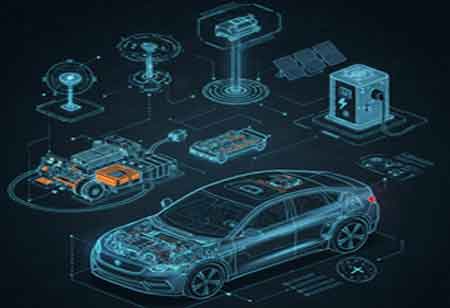Thank you for Subscribing to Auto Business Outlook Weekly Brief
Effective Strategies for Optimizing Sustainable Growth in Electric Vehicles
Governments worldwide offer tax credits, subsidies, and infrastructure investments to promote EV adoption and encourage manufacturers to meet higher environmental standards.

By
Auto Business Outlook | Tuesday, May 20, 2025
Stay ahead of the industry with exclusive feature stories on the top companies, expert insights and the latest news delivered straight to your inbox. Subscribe today.

Fremont, CA: The transition to electric vehicles (EVs) is a global effort to combat climate change and reduce dependence on fossil fuels. As demand for EVs grows, automakers, governments, and technology providers focus on optimization strategies supporting long-term sustainability across the entire vehicle lifecycle. From production and energy sourcing to charging infrastructure and recycling, these strategies aim to maximize efficiency while minimizing environmental impact. Integrating innovation and sustainability at every stage allows the EV ecosystem to evolve into a cleaner, more resilient transportation model.
Enhancing Energy Efficiency and Battery Sustainability
The most effective strategy for sustainable EV development is improving energy efficiency across vehicle design and operation. Manufacturers invest in lightweight materials such as aluminum, carbon fiber, and advanced composites to reduce overall vehicle weight and improve energy consumption. Aerodynamic enhancements also increase driving ranges, allowing EVs to travel farther on a single charge. The improvements not only enhance performance but also reduce the environmental footprint of each trip.
Lithium-ion batteries dominate the market, but the focus is shifting toward increasing energy density, charging speed, and lifecycle durability. Companies are turning to ethically and sustainably sourcing raw materials like lithium, cobalt, and nickel. Supply chain transparency, responsible mining practices, and increased use of recycled materials are becoming industry standards. Second-life applications for used EV batteries—such as stationary energy storage for solar or wind power—help extend their utility and reduce waste.
Expanding Infrastructure and Lifecycle Management
Developing innovative, accessible charging infrastructure is another critical strategy for sustainable EV adoption. Expanding fast-charging networks and integrating them with renewable energy sources ensures that EVs remain environmentally friendly beyond the manufacturing stage. Optimization involves efficient lifecycle management through recycling and circular economy practices. As EV adoption increases, the need for sustainable end-of-life strategies becomes more urgent. Battery recycling programs are gaining momentum, focusing on recovering and reusing valuable materials in new battery production.
The closed-loop systems reduce the need for virgin resources and minimize landfill waste. Policy support and consumer incentives play a key role in accelerating sustainable development. Public awareness campaigns and transparent sustainability reporting help build consumer trust and support long-term behavioral change. Sustainable development in the EV sector depends on a multifaceted optimization approach that spans design, energy use, infrastructure, and end-of-life management.






